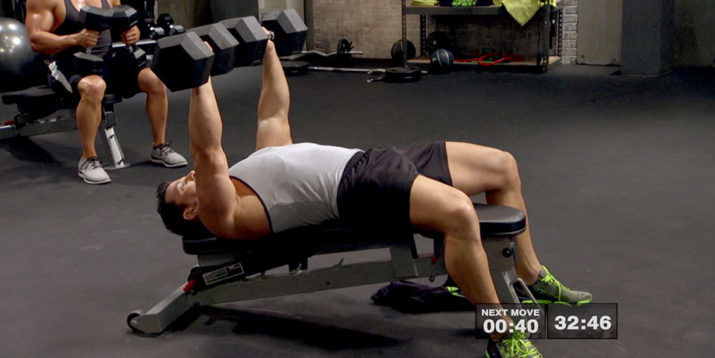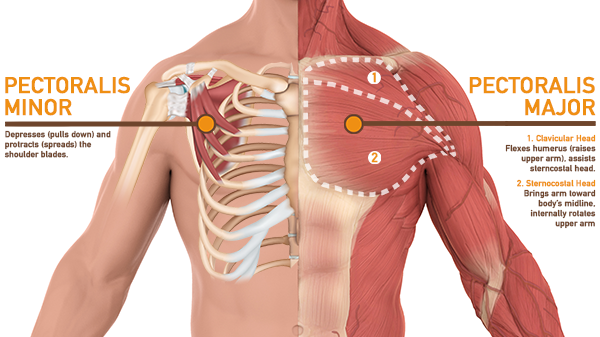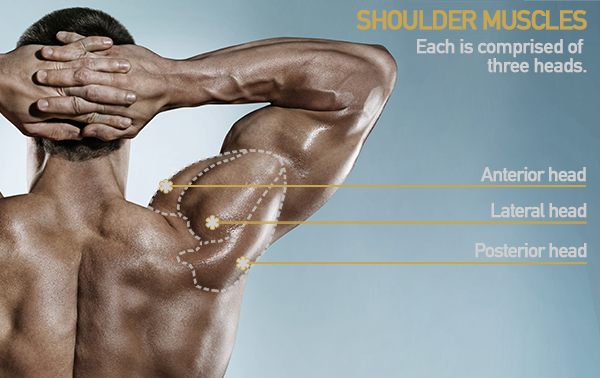How to Do the Decline Bench Press for a Lower Chest Pump (Video)

The decline press is sort of like the redheaded stepchild of the bench press family. While the flat bench press — one of three tests of fortitude in the sport of powerlifting — is the overachieving oldest child, and the incline press — a standby for bodybuilders and fitness models — is the flashy, charismatic youngest child, tucked over in the corner, covered in drips from a leaky ceiling pipe, is the often-neglected decline bench press.
And that’s a shame.
While setup for the move — a reverse decline sit-up with a head weave around the bar — can be awkward (especially if you’re wrestling a pair of dumbbells), and lowering a heavy barbell towards your neck like a guillotine can be daunting, these are minor quibbles compared with the numerous advantages of this great exercise. Here’s why.
Decline Dumbbell Press: Step by Step Instructions
Appears in: Body Beast >> Beast Up >> Chest, Shoulders, and Triceps
- Keeping your abs engaged, lie back on a decline bench, holding a pair of medium-to-heavy dumbbells at the sides of your your chest. Your palms should be facing forward.
- With your feet flat on the floor, push the dumbbells over your chest.
- Pause, and then slowly lower the weights back to the starting position.
Benefits of the Decline Bench
More pecs
Where the flat bench heavily recruits the anterior deltoid, the orientation of the decline bench press shifts more of that load onto the lower, or sternal, head of the pectoralis major. That amounts to greater chest development, especially at the lower fibers.
Less stress
Because of your inverted position, the bar’s path naturally helps reduce stress on the shoulder joint, which you might otherwise encounter in a move like the incline press. You’re also less likely than in a flat bench press to arch your back, which can place greater pressure on the lumbar spine and increase the risk of injury.
More weight
Most lifters find that they can handle surprisingly heavy weight on the decline press — often more than they can on the bench press.
“The decline bench press gives you a greater mechanical advantage,” says Beachbody fitness expert Cody Braun. “That allows you to press more weight.” Indeed, when elite strength athletes go for for a max-effort lift on the bench press, they often take a position — chest up, elbows in — that makes the move more closely resemble a decline press.
The upshot: if you want to reap the strength- and muscle-building benefits of handling big weights without causing undue strain on your joints, hit the decline bench press.
How to Make the Decline Bench Press Harder (and Easier)
Sure, it’s easy enough to change the weight — and that’s a great option, especially if you tend to forget that strength training is supposed to be progressive or, equally, if you tend to pile so much weight onto the bar that orthopedic surgeons spontaneously hand you their business cards whenever they see you in the gym. It bears repeating: if you’re going for enhanced strength, muscle size, or performance, choose the heaviest weight you can handle with good form for the appropriate number of reps.
But what if you don’t have a choice of weight to use on the decline press? What if you’re lifting in a hotel, and all they have are 25-pound dumbbells? What if you’re switching off sets with your significant other who’s twice, or half, as strong as you? How do you change the difficulty? A few strategies:
Change the angle
Many (though not all) decline press stations are adjustable. If that’s the case with yours, try a different angle. In general, most people find that the closer the bench is to flat, the harder the move; and the steeper the decline, the easier the move. If you’re having trouble with the move, change the angle before abandoning the exercise altogether.
Vary the motion
One little-used but effective technique on all bench-press variations is the “1.5.” Under this approach to the movement, you lower the weights fully, press them up halfway, then lower them again before once again pressing them to arm’s length. That’s one rep.
If you’re feeling particularly sporty you can divide the rep into three movements, so that each rep is even more fiendish: lower the weights fully, press them up one quarter of the way, then lower them again; press them up halfway, then lower them again; press them up three quarters of the way, lower them again; then press them all the way up. That’s one rep — and a heck of a lot of uninterrupted time under tension. Yowch.
Change the tempo
When you lower a weight quickly then heave it back up, you’re minimizing the amount of time your muscles spend under tension, a key stimulus for growth. Lowering the weight slowly forces the muscles to do more work. A three-to four-second lowering phase followed by a fast press is optimal.
What Muscles Does the Decline Bench Press Work?
Pectorals

The chest muscle you can see is the pectoralis major, and it comprises two heads: the clavicular (upper), and the sternal (lower). They combine to bring your arms toward the midline of your body, as when clapping. Toiling in obscurity underneath the pec major is the pectoralis minor. The pec minor draws your shoulder blades down and forward.
What part of the chest does the decline bench press work?
The decline bench press places greater emphasis on the pectoralis major’s sternal (lower) head than moves like the flat or incline bench press.
Deltoids

Emphasized less than in a flat or incline bench, the muscles of the shoulder still get plenty of work in the decline press. The deltoid consists of three heads: the posterior (back), the lateral (side), and the anterior (front), the last of which shoulders more of the load (see what we did there?) in the decline bench press.
Triceps

The pushing muscle of your upper arm, the triceps occupies roughly two-thirds of its musculature. It consists of three heads (from closest to your torso outward): the long, medial, and lateral. The decline bench press emphasizes the lateral and medial heads of the triceps.
